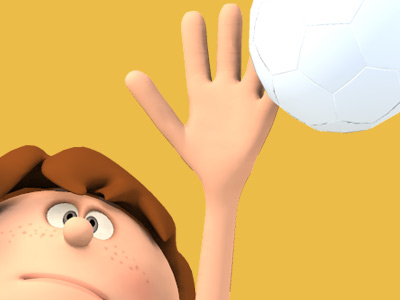Volleyball Block
Blocking refers to the actions taken by players standing at the net to stop or alter an opponent's attack.
A block that is aimed at completely stopping an attack, thus making the ball remain in the opponent's court, is called offensive. A well-executed offensive block is performed by jumping and reaching to penetrate with one's arms and hands over the net and into the opponent's area. It requires anticipating the direction the ball will go once the attack takes place. It may also require calculating the best foot work to executing the "perfect" block.
The jump should be timed so as to intercept the ball's trajectory prior to it crossing over the net. Palms are held deflected downward about 45–60 degrees toward the interior of the opponents court. A "roof" is a spectacular offensive block that redirects the power and speed of the attack straight down to the attacker's floor, as if the attacker hit the ball into the underside of a peaked house roof.
By contrast, it is called a defensive, or "soft" block if the goal is to control and deflect the hard-driven ball up so that it slows down and becomes easier to defend. A well-executed soft-block is performed by jumping and placing one's hands above the net with no penetration into the opponent's court and with the palms up and fingers pointing backward.
Blocking is also classified according to the number of players involved. Thus, one may speak of single (or solo), double, or triple block.
Successful blocking does not always result in a "roof" and many times does not even touch the ball. While it's obvious that a block was a success when the attacker is roofed, a block that consistently forces the attacker away from his or her 'power' or preferred attack into a more easily controlled shot by the defense is also a highly successful block.
At the same time, the block position influences the positions where other defenders place themselves while opponent hitters are spiking.
SPORTS

RESOURCES
This article uses material from the Wikipedia article "Volleyball", which is released under the Creative Commons Attribution-Share-Alike License 3.0.
© Stories Preschool. All Rights Reserved.









